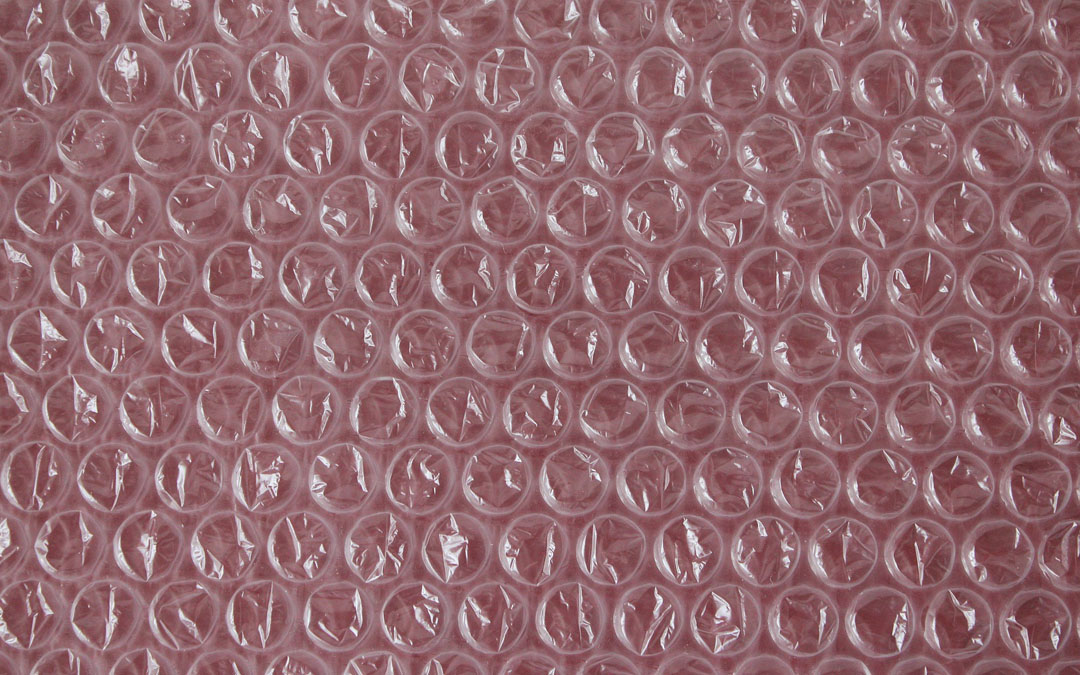Bubble Wrap® is the world’s best-known packaging material. What started out as an attempt at funky home décor, ended up revolutionizing the packaging world. To this day, it continues to influence packaging strategies, artists and even stress relief tactics. It’s only fitting that we give this now-classic packaging supply the attention and celebration it deserves. Let’s look at the history and functionality of Bubble Wrap® packaging material.
History in The Making
Developed by Alfred Fielding and Marc Chavannes in 1957, Bubble Wrap® was initially conceived as 3D wallpaper. Intending to create a new form of household décor, they sealed 2 shower curtains together, trapping pockets of air inside. Despite the novelty, it never truly took off.
Not inclined to give up, Alfred and Marc re-christened it as insulation for greenhouses, an application that seemed more likely for such an interesting creation. Unfortunately, this second attempt didn’t take either. Things appeared to be not so bright until a marketer by the name of Frederick Bowers realized the perfect use for their plastic bubble sheets.
Frederick introduced IBM to the newly-christened Bubble Wrap®, positioning it as a packaging material for protecting their new line of computers. IBM agreed, and its success finally proved the effectiveness of such an interesting product. Sealed Air Corporation was formed in 1960, with Bubble Wrap® as the cornerstone of their offerings. And the rest, as they say, is history.
A Revolutionary Product
Bubble Wrap® is a unique creature, even among other packaging materials. Thanks to its air-filled cells, it protects products from shock and vibration damage. The increase in protection it provides means you’re able to use less of it than other packaging materials, reducing packaging waste and saving your budget. It also helps to reduce the size and weight of your packages, saving money on shipping costs.
All this from a product that started life as 3D wallpaper.
A Bubble for Any Reason
Anything that is truly useful in this world has multiple applications, and Bubble Wrap® is no exception—over the years, its list of potential uses has grown longer and more interesting.
Bubble can have anti-static, adhesive or cohesive properties. It’s available in bubble pouches, bubble mailers, even krubble (bubble cushion glued onto packing paper).
In recent years, Bubble Wrap® has become a medium for arts and crafts. Some prime examples include it being used for creating patterns, trinkets and ornaments, and even pieces of art itself—some artists inject paint directly into the bubbles, creating landscapes and portraits of people. Bubble is also being used as clothing accessories like clutch handbags, and is even being used for its original intention—adorning some walls as wallpaper. Finally!
It’s newest, and most exciting development, is its new line of Bubble Wrap® IB Expressions. It’s Bubble Wrap® in varying shapes and colours, perfect for use in a brand’s unboxing strategies. Imagine ordering dog toys online and finding them packed in dog bones-shaped white bubble, or Valentine’s chocolate boxes wrapped in hearts-shaped red bubble.
It’s safe to say we’re big fans of Bubble Wrap® and all its possibilities, whether it’s stress relief, artwork or good old-fashioned product cushioning. The Packaging Company isn’t alone in that fandom either—in 2001, an Indiana-based radio station started an annual Bubble Wrap® Appreciation day, which has grown into quite the celebratory event. Keep your products and your shipments safe with everyone’s favourite packaging material, Bubble Wrap®.




